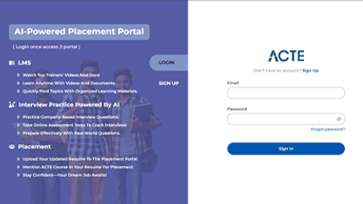Overview of IBM BPM Administration
To guarantee effective operation and business process optimization, IBM BPM Administration entails managing the IBM Business Process Manager platform. The configuration and upkeep of the BPM environment, which involves overseeing process design, execution, and performance, fall within the purview of administrators. They manage the configuration of process servers, applications, and system integrations. Managing user access, guaranteeing system security, and carrying out performance monitoring and diagnostics are among the primary duties. In addition, administrators handle system upgrades, resolve problems, and supervise data reporting. Professional administrators are essential for promoting operational efficiency and innovation because they improve process performance, promote agile techniques, and adjust to changing business needs.
Additional Info
Roles and Responsibilities of IBM BPM Administration
- System Configuration: Configuring and deploying IBM BPM environments entails customizing application components and server settings to meet the enterprise's requirements. This entails adjusting performance parameters to maximize effectiveness in light of the workloads at hand. Version control is applied through upgrades, patches, and updates to ensure system security and stability.
- Monitoring and Performance Management: Monitoring system performance metrics like CPU utilization, memory, and response times is essential. Routine health examinations are performed to find and fix possible problems before they affect users. Performance problems and system flaws are swiftly troubleshooted and fixed to ensure operational continuity.
- Security Management:Implementing and overseeing user access controls and permissions is part of security management tasks, which are meant to protect sensitive information and procedures. It is crucial to make sure the system complies with compliance and security standards. Additionally, they respond to security events to safeguard the system and its data, such as illegal access or data breaches.
- Backup and Recovery: To safeguard system settings and data, a thorough backup plan is created and put into action. Plans for disaster recovery are designed to guarantee that functioning is quickly restored in the event of significant failures. Testing backup and recovery procedures on a regular basis ensures that they function correctly when needed.
- Integration and Interfaces: Middleware and APIs enable system integration by linking IBM BPM with other programs. Maintaining links between external systems and IBM BPM guarantees seamless interoperability and data exchange. To ensure smooth system interactions, they troubleshoot and fix integration problems.
- User and Role Management: In user provisioning, roles and accounts are created, changed, and terminated as necessary. Controlling access to system functionalities is done through managing role assignments and permissions. They offer assistance with inquiries about system usage, role modifications, and user access problems.
- Documentation and Reporting: To guarantee uniformity and clarity, keep up-to-date records of system configurations, protocols, and troubleshooting manuals. To facilitate well-informed decision-making, they produce both scheduled and spur-of-the-moment reports on user behaviour, system performance, and other vital indicators.
Future Prospects for IBM BPM Administration
- Combining Traditional and New Technologies: It is anticipated that AI and machine learning technology will revolutionize IBM BPM Administration by advancing process automation, enhancing predictive analytics, and facilitating better decision-making. IBM BPM will need to establish connections with IoT devices as the IoT grows, resulting in process management that is more dynamic and data-driven.
- Adoption and Management of Cloud Computing: Due to the move toward hybrid and multi-cloud settings, IBM BPM administrators will need to manage and optimize BPM systems across several cloud platforms. Managing scalable and flexible BPM systems in the cloud will become more important as cloud-native BPM solutions gain popularity.
- Improved User Experience: IBM BPM will be impacted by the growing ubiquity of low-code and no-code platforms, necessitating administrators to support, integrate these technologies to streamline process design and maintenance. The provision of seamless user experiences across web-and mobile-based interfaces will receive more attention, and to ensure that various platforms and devices have functionality.
- Advanced Reporting and Analytics: Real-time analytics will be prioritized in future developments so that administrators can use real-time data to monitor and optimize processes. Predictive analytics tool integration will improve the capacity to predict process performance and make data-driven decisions even more.
- Safety and Adherence:IBM BPM managers will need to implement advanced security measures to protect critical process data because cyber threats are on the rise. Sustaining compliance with industry standards and regulatory obligations will necessitate constant upgrades and management in response to changing restrictions.
- Innovation and Optimization of Processes: Continuous process improvement will drive the need for enhanced BPM tools and processes that facilitate iterative optimization and innovation. Process mining techniques, which offer more thorough insights into process performance and point up opportunities for improvement, will be used more frequently.
- Cooperation and Integration of Workflow: More integration between BPM systems and other enterprise tools and systems will be necessary in the future to improve cross-functional cooperation and expedite workflows. Administrators of IBM BPM systems will have to oversee and maintain advanced teamwork tools that enhance communication and coordination across teams and departments.
Benefits of IBM BPM Administration
- Simplified Business Processes: IBM BPM administration enables efficient business process design, implementation, and monitoring. By automating workflows, businesses can improve procedures to lessen human error, resulting in quicker and more precise process execution.
- Increased Process Visibility:Through dashboards and analytics, the platform offers in-the-moment insights into process performance. With this access, administrators may spot process bottlenecks. Monitoring key performance indicators (KPIs) is important.
- Flexibility and Scalability: The IBM BPM administration supports scalability, enabling companies to modify their procedures as they expand. Because the platform can manage increasing workloads and interface with other systems, process management can adjust to changing organizational requirements.
- Enhanced Governance and Compliance:IBM BPM's integrated compliance tools assist companies in following internal and regulatory guidelines. By enforcing regulations and maintaining audit trails, administrators can guarantee that processes are carried out in a regulated and compliant manner.
- Lowering of Expenses: IBM BPM administration decreases operational costs by automating tedious activities and streamlining workflow. Process automation and optimization's increased efficiency results in lower labour and error-related costs.
- Improved Cooperation: The platform offers a consolidated environment for process administration, which promotes improved teamwork among participants. This enhances collaboration and communication, which results in a more seamless and effective project execution.
Some of the widely used tools for IBM BPM Administration Training
- Documentation for IBM BPM: Refer to the official IBM BPM literature for comprehensive setup, troubleshooting, and system administration instructions. It is an essential tool for understanding the platform's features and best practices.
- Redbooks from IBM: IBM Redbooks contain expert instructions authored by IBM personnel. These books cover a wide range of IBM BPM issues, from basic setup to advanced functionality, and provide technical guidance and practical insights.
- IBM Certification and Training: The structured learning pathways provided by IBM's own training and certification programs include instructor-led classes, online modules, and practical laboratories. These courses are intended to help you advance and certify in IBM BPM administration.
- The IBM Watson Knowledge Catalog: This catalogue contains a carefully chosen collection of IBM BPM training resources, such as case studies, tutorials, and best practices. It assists users in locating pertinent educational materials and keeping up with recent advancements.
- Developer Community at IBM: Within the IBM Developer Community, administrators can engage in peer-to-peer and professional interaction via forums, blogs, and discussion groups. It's a helpful platform for sharing knowledge, seeking help, and cooperating to resolve problems.
- Platforms for Online Learning: IBM BPM courses are available on platforms including Coursera, Udemy, and LinkedIn Learning. They range in difficulty from basic to advanced and frequently have interactive tests, video lectures, and hands-on activities.
Show More































